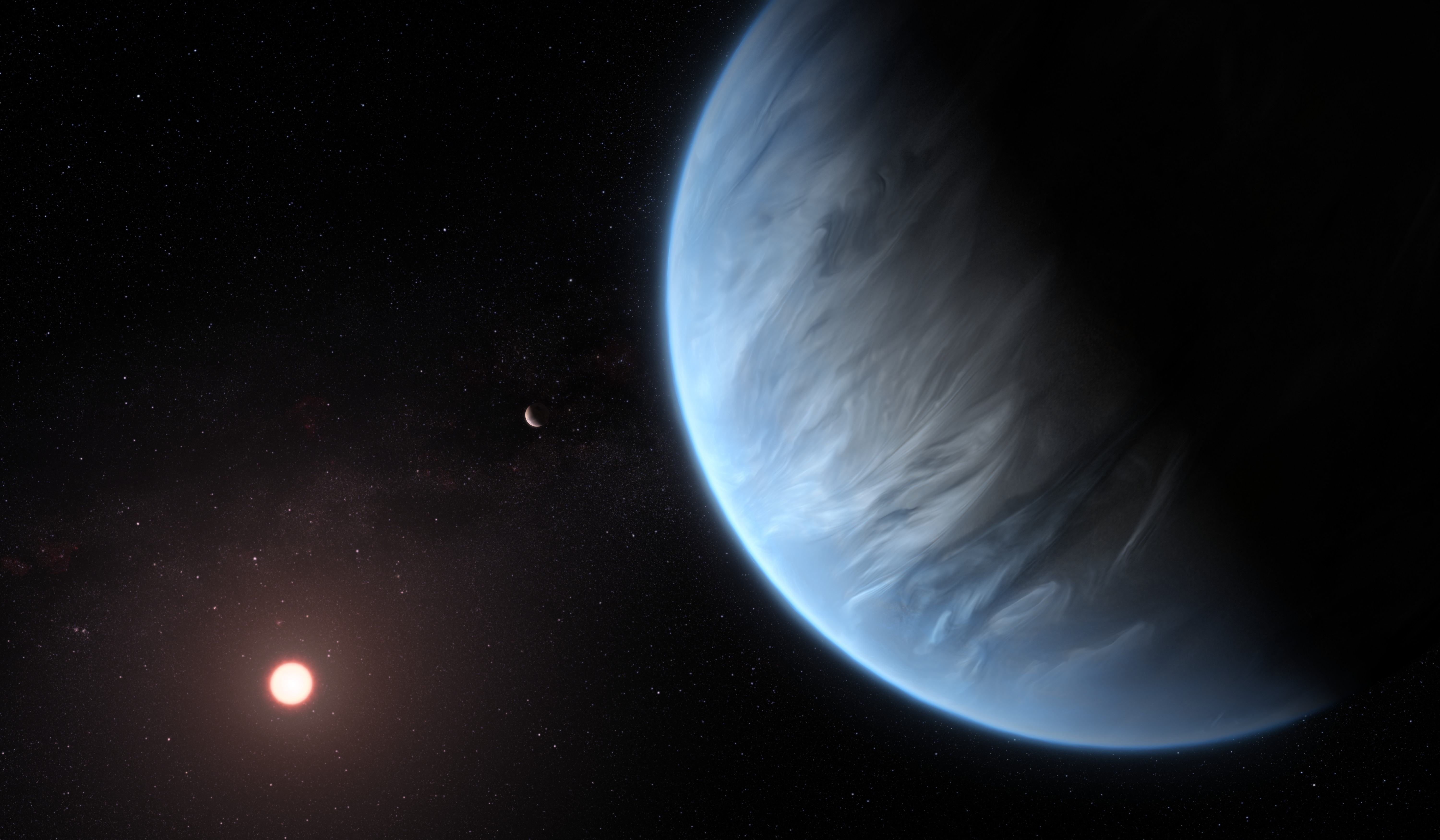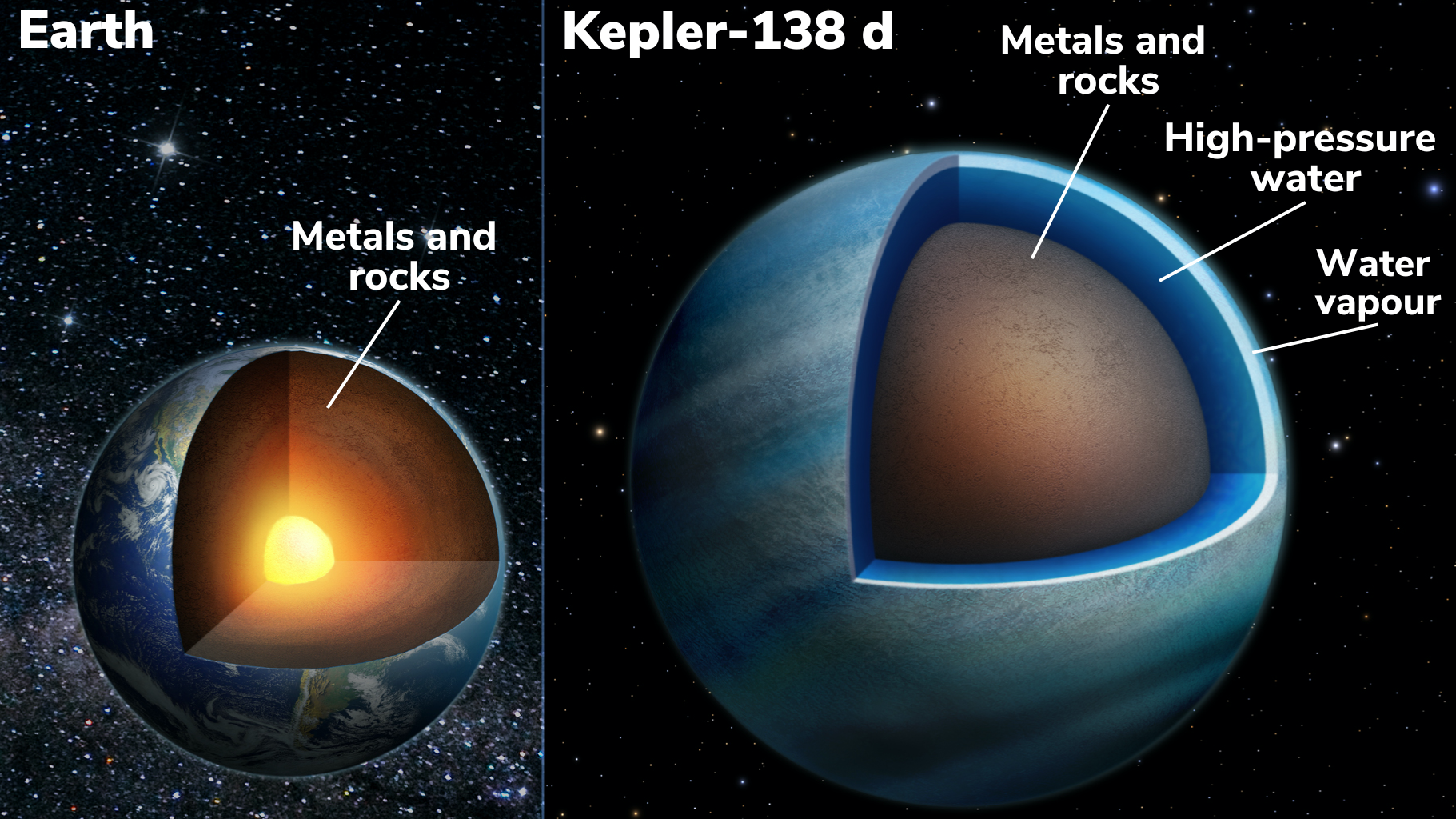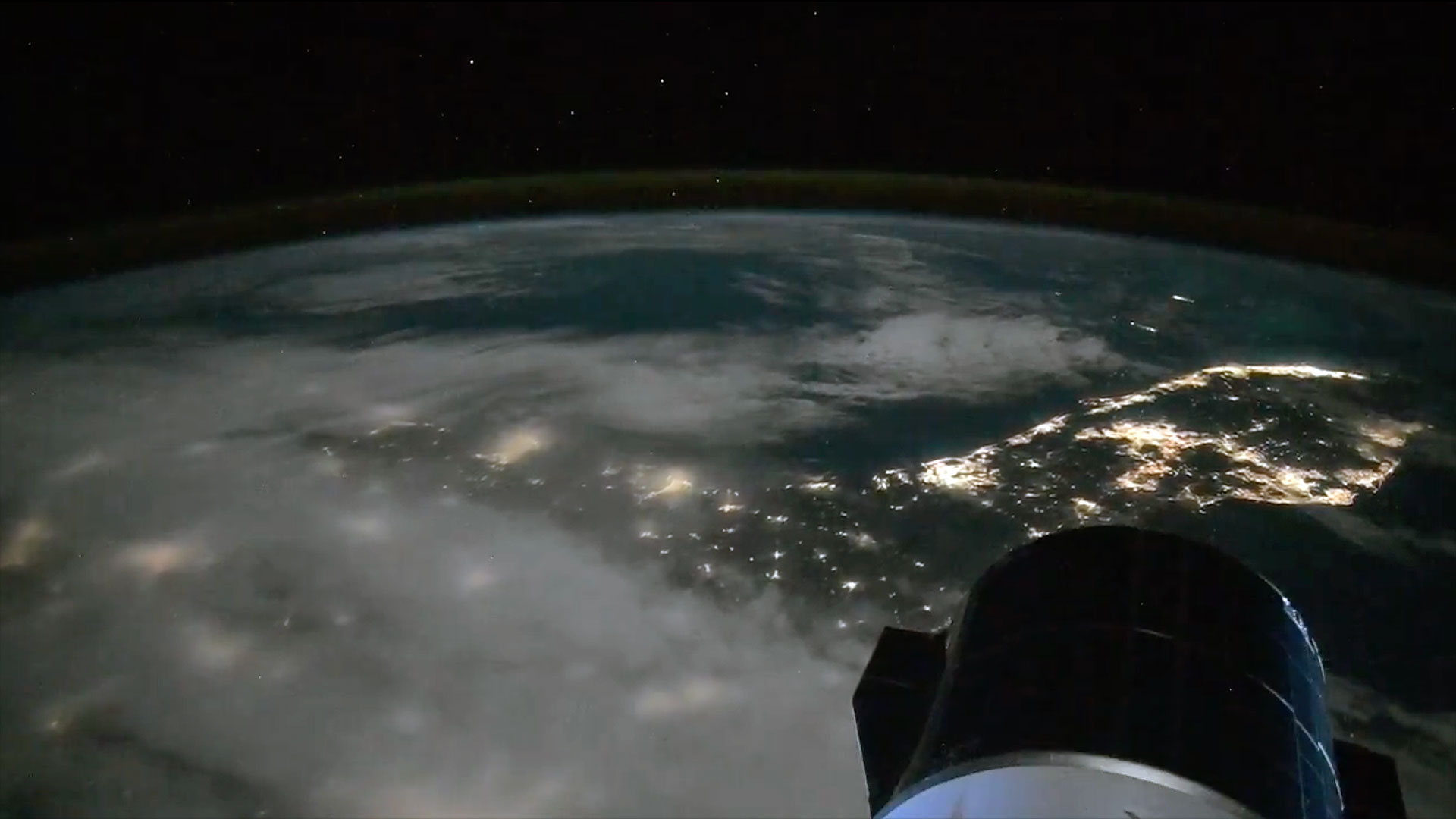Astronomers discover strange twin alien planets might be water worlds
Two planets found by NASA's retired Kepler Space Telescope may be made mostly of water, according to new research.
The two exoplanets, dubbed Kepler-138c and Kepler-138d, orbit a star located about 218 light-years away from Earth in the constellation Lyra. Scientists intrigued by 2014 data from the Kepler Space Telescope decided to revisit the two planets using the Hubble Space Telescope and NASA's retired Spitzer Space Telescope in hopes of better understanding the distant worlds and what they're made of. And surprisingly, the answer might be mostly water.
"We previously thought that planets that were a bit larger than Earth were big balls of metal and rock, like scaled-up versions of Earth, and that's why we called them super-Earths," Björn Benneke, a planetary astrophysicist at the Université de Montréal in Canada and a co-author on the new research, said in a statement.
"However, we have now shown that these two planets, Kepler-138c and d, are quite different in nature: a big fraction of their entire volume is likely composed of water," he said. "It is the first time we observe planets that can be confidently identified as water worlds, a type of planet that was theorized by astronomers to exist for a long time."
Related: 10 amazing exoplanet discoveries
The astronomers can't be sure yet that these planets are indeed watery; they haven't directly detected the substance on these worlds. But the researchers were able to calculate the density of each planet: Each has about three times the volume of Earth but only twice the mass, making them much less dense than our own world.
(The similarity of the two worlds was a surprise in and of itself, since scientists had expected the planets to be quite different.)
Breaking space news, the latest updates on rocket launches, skywatching events and more!
The low density suggested that as much as half of each world is made up of something heavier than the hydrogen and helium of gas giants, but lighter than the rock scientists had expected to find — leaving water a real possibility.
The researchers suggest that the two planets might be a little bit like icy moons of the outer solar system, which can hide an ocean of liquid water below an icy shell and above a rocky core. However, the Kepler worlds would be much, much hotter than these moons, with little ice to be found.
"Imagine larger versions of Europa or Enceladus, the water-rich moons orbiting Jupiter and Saturn, but brought much closer to their star," Caroline Piaulet, a Ph.D. student at the Université de Montréal and lead author on the new research, said in the statement. "The temperature in Kepler-138c's and Kepler-138d's atmospheres is likely above the boiling point of water, and we expect a thick, dense atmosphere made of steam on these planets."
(Underneath all that steam, however, the scientists say that there might be liquid water, or possibly even water so hot and under so much pressure that it has the density of a liquid but flows like a gas, a state called a supercritical fluid.)
The exotic worlds aren't the only surprise the researchers found in the Hubble and Spitzer data. Astronomers had originally used the Kepler observations to discover three planets, announced in 2014. Benneke was particularly interested in the outermost world, Kepler-138d, prompting the Hubble and Spitzer observations that occurred between 2014 and 2016.
That data points to a fourth planet, which would be dubbed Kepler-138e, a small world orbiting the star every 38 days at a distance that could permit liquid water to exist at its surface, the scientists said. (Kepler-138b and c orbit every 10 and 14 days respectively.)
The additional observations also suggested that the innermost planet, Kepler-138b, is about the size of Mars, which would make it one of the smallest of the more than 5,000 exoplanets scientists have found to date.
The researchers hope that the Kepler-138 planets won't be the last to offer puzzles like these. "As our instruments and techniques become sensitive enough to find and study planets that are farther from their stars, we might start finding a lot more water worlds like Kepler-138c and d," Benneke said.
The research is described in a paper published Thursday (Dec. 15) in the journal Nature Astronomy.
Email Meghan Bartels at mbartels@space.com or follow her on Twitter @meghanbartels. Follow us on Twitter @Spacedotcom and on Facebook.

Meghan is a senior writer at Space.com and has more than five years' experience as a science journalist based in New York City. She joined Space.com in July 2018, with previous writing published in outlets including Newsweek and Audubon. Meghan earned an MA in science journalism from New York University and a BA in classics from Georgetown University, and in her free time she enjoys reading and visiting museums. Follow her on Twitter at @meghanbartels.


